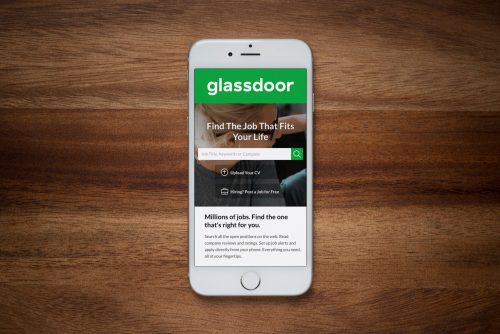Get out of your own head. Right now. Whilst it’s comfortable, familiar and safe, it’s no good to anyone else if you’re spending all your time in there. It’s particularly disruptive to your brand, your audience, and your employees.
As creatures of habit, we like to reassure ourselves that everything is going to be okay. With that, we make assumptions that others have the same outlooks and experiences as us. This generally makes for an easier life, and avoids ideas of anxiety or worse still, being WRONG. (Spoiler alert: sometimes you are wrong.)
In Seth Godin’s book, Marketers Are Liars he compares ‘worldview’ to a lens. “Present the same data to two people with a different worldview and they may take entirely opposite decisions.” Marketers regularly forget this. Which is why people like Seth feel compelled to bang on about it so often. Sorry, Seth, but you do.
The argument certainly holds water. Products, processes and even projects can go in different directions depending on who they’re exposed to. Everyone has seen the meme where the perfectly paved path has been circumnavigated by a line through the grass. Whilst some people like to follow the intended path, others like to carve their own.
Another great and real-world example of this is Juicero. This blog isn’t long enough to tell the full and frankly ridiculous story of Juicero, but maybe watch this YouTube video when you get a moment. Juicero fell down a massive $120 million hole because through general lack of communication, planning and strategy, they released a juicing product which was ultimately deemed entirely useless. Ouch.

What are you playing at?
Validate your ideas.
Whilst many organisations, particularly startups, are the brainchild of just one or two people, it’s incredibly important that the idea or concept is communicated outside of the immediate founders’ circle. Many entrepreneurs may be apprehensive about doing this as it can reveal the big idea or even blow the cover on intellectual property. Legalities aside, it’s important to validate an idea whilst it’s still in its infancy.
Validation can take on many forms, the most popular of which are user testing (where an NDA would be essential) or building an MVP (minimum viable product). This early stage research can reveal gaps in your marketing plan, accessibility issues for certain demographics, or practical limitations of your product or service. Nip these issues in the bud early, and you’ll save a great deal of cost and embarrassment further down the line. Especially when people are making YouTube videos about your failure.
Journey says…
Whether you’re launching a new and disruptive yoghurt brand, or meeting with your creative agency, it’s essential that you lay everything out on the table. In agency world specifically, the more that we know about you and where you want to go, the easier it is for us to help you get there.
This is a particular area that we really enjoy, as we’re essentially joining you for the ride, and your success is our metric. During the initial stage we will ask probing (but important) questions such as:
- Who is your product or service for and how have you identified that there’s a market need for it?
- What is special about you, your brand, product or service? We can’t decide that for you, but if we can help you find your identity, then marketing, brand and design suddenly gets a whole lot easier
- Which channels are important to you? Where are your potential customers congregating? Twitter? TikTok? Outside the local butchers?
When you work with an agency, make sure they grill you like a well done sirloin. If they don’t, they’re not doing their job right.

Come out punching.
Launch with purpose.
First impressions are everything. First date, first day of school, first launch of your product – it all matters. Many hopeful brands that may have had potential ended up a flop due to their poor launch. We’re not expecting you to fire your product out of a comedy oversized cannon, but in a marketplace that is crowded, noisy and fast-moving, it pays dividends to put creative minds and a relatively big budget behind your initial marketing campaign.
Journey says…
Don’t cut corners on design. Audiences are not only fickle and judgemental, but are visual beings too. Whether we’re talking about the logo, the website or the packaging, it all needs to hit bullseye to turn a prospect into a customer.
Consistency is key, too. It makes us sad when we see inconsistent branding. Byron Burger is a superb example, which is covered well in this blog. Not sure about you, but to us it looks like an overzealous designer delivered too many logos, and the brand couldn’t decide which to go with! Bright idea, or a bit weird?
Customer experience should be a priority, and no matter what the touchpoint, no matter how large or small (from the postcard inside an order through to the thank you page on an online form), it should all feel well-considered and cohesive.
You can achieve this by centralising your creative. This may sound like it goes against the grain as the web itself becomes more decentralised, but in essence it makes perfect sense. Brands and organisations can start to lose consistency when various aspects of their marketing output are spread across too many agencies or suppliers. Working with one core agency on marketing, design, web, strategy, social media (and more) ensures a unified standard across the board.
If you’re worried about putting all of your eggs into one basket, select an agency that has long-lasting relationships with their clients and decades of industry experience. Is that a shameless plug for Journey, established in 1995? Yes, yes it is.

Never stop talking.
Communicate in all directions.
Communication is key throughout a business, internally and externally. There are benefits to both. Internally, good communication, unwavering transparency and clear and well-communicated values build a strong and unifying culture. We talk more about that in our previous employer brand pieces which you can read here.
External communication, which is generally marketing and PR, keeps your customers informed, spreads your message to new customers, and when done very well, makes customers feel valued. We are now in an age where you can exchange some lighthearted ‘bants’ with your favourite supermarket via Twitter. What a time to be alive. Memes and viral tweets aside, this is a concentrated marketing effort which builds rapport, trust and awareness, no matter how much you like or dislike grocery shopping.
Journey says…
Build a strong and inclusive social media presence. Do this through accessible design, great copy and a clear strategy. Be consistent in your scheduling and ensure that you’re considering what you are posting where. Remember, a Facebook audience is not the same as a LinkedIn audience. In fact, LinkedIn folk can get very passionate about this.
Social media is exciting and fun, but internal communication is essential too. We can’t stress enough how important it is for the longevity of a brand to build a company culture that not only attracts employees, but keeps employees. In the age of Glassdoor—TripAdvisor for organisations—there is no hiding away from micro management and terrible bosses. (For the record, the bosses at Journey are superb and they did not tell me to write this.)

Wrapping up
Clarity and communication should be front of mind in just about everything you do as a business or business owner. It should transcend every strata of your brand, from internal meetings through to public announcements.
Get all of this right up front, get the sign-on from the board early on, get the processes, designs and teams in place before you get tripped up, and you’ll never go wrong.
If you need help communicating to your customers, defining your brand, or discovering your voice, talk to us. We’d love to hear from you.
back to all news or you may also be interested in the news below:
TWEET OR TWO
To ensure you stay in the loop and receive our news, updates and general musings hot off the press, follow us on Twitter now. We promise not to bombard you!




